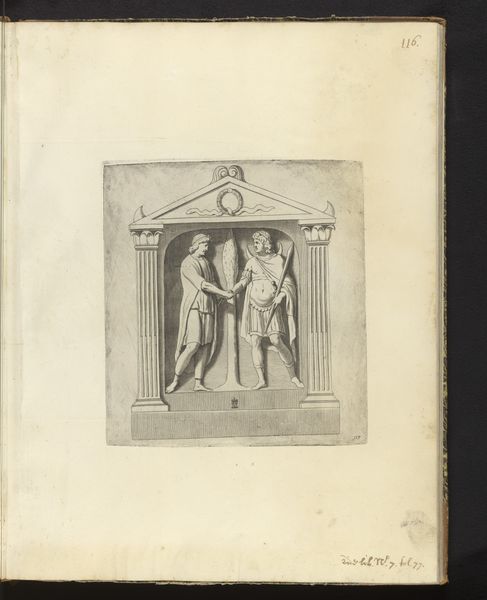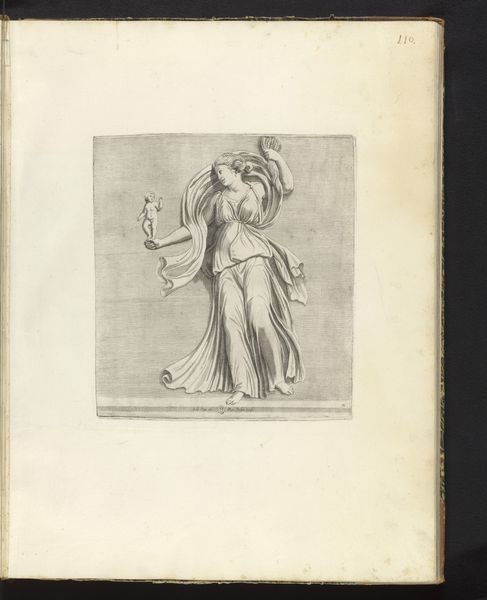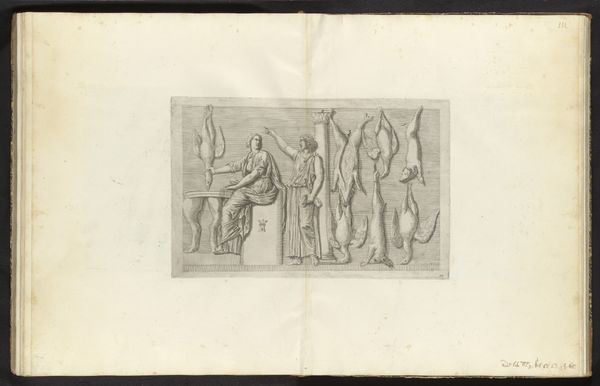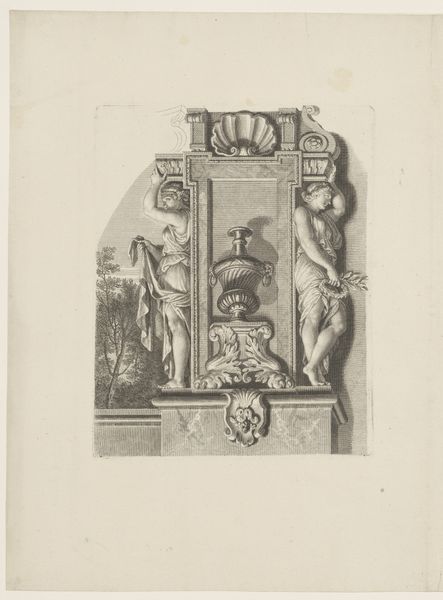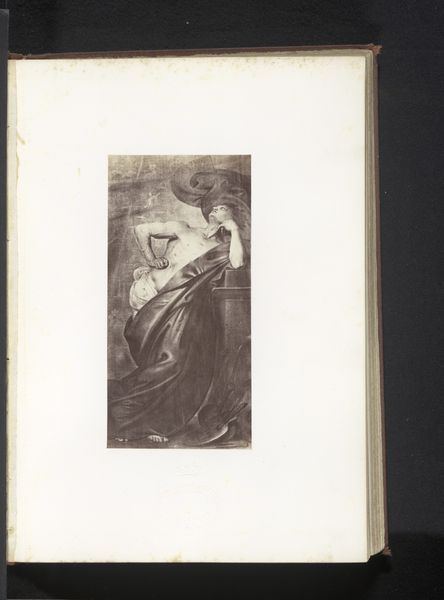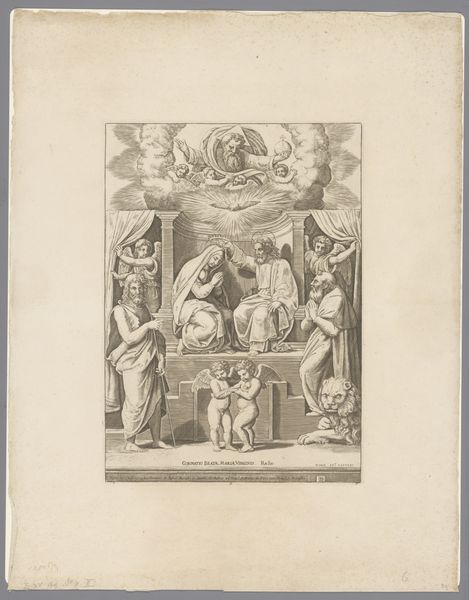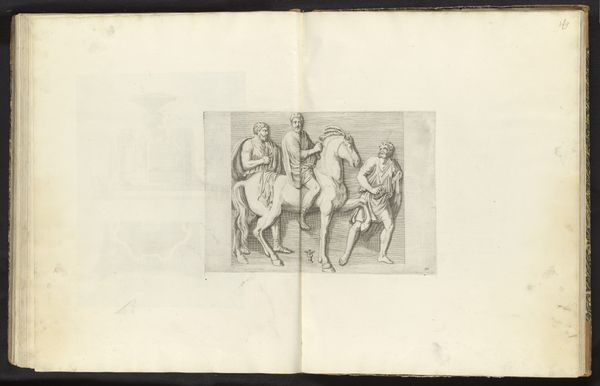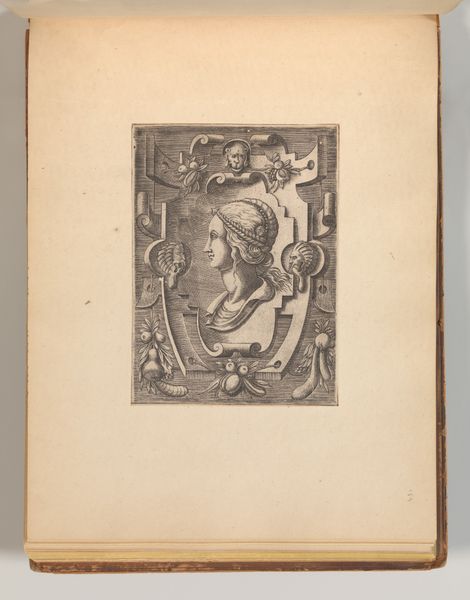
drawing, print, paper, ink, pen, engraving
#
drawing
#
aged paper
#
toned paper
#
light pencil work
#
baroque
# print
#
old engraving style
#
sketch book
#
classical-realism
#
figuration
#
paper
#
personal sketchbook
#
ink
#
pen-ink sketch
#
pen and pencil
#
sketchbook drawing
#
pen
#
history-painting
#
nude
#
sketchbook art
#
engraving
Dimensions: height 240 mm, width 221 mm
Copyright: Rijks Museum: Open Domain
Curator: We're looking at "Bas-reliëf met een soldaat en een vrouw," or "Bas-relief with a Soldier and a Woman," a pen, ink, and engraving on paper attributed to Reinier van Persijn, dating from roughly 1636 to 1647. It’s part of the Rijksmuseum's collection. Editor: It strikes me immediately as quite static. The figures, while classical in form, seem caught in a tableau rather than actively engaging. Curator: Observe how the artist uses line weight to create depth and shadow, attempting to emulate the three-dimensionality of a bas-relief sculpture. Notice the column – its presence does more than offer symbolic gravitas; it’s an exercise in form, delineating foreground and background through its fluted design. Editor: Indeed. That column speaks to more than classical architecture. The juxtaposition of the armed soldier with the draped woman evokes complex themes. He's shielded, but vulnerable; she is seemingly bare, yet powerful enough to gesture towards his bare chest. Is this Venus disarming Mars, a common trope of the time? Curator: The interplay of exposed skin and protective armor is certainly key. The diagonal line created by the staff connects their gazes and perhaps hints at a narrative about the tension between war and peace, power and surrender, action and passivity. Van Persijn employs hatching techniques to define musculature, emphasizing the physicality of the subjects, while their faces retain a somewhat generalized idealism. Editor: I wonder about the significance of that almost dismissive facial expression worn by the woman. There's an ambiguity in her posture. Is she supporting or challenging the soldier? Is this merely a representation of idealized forms, or are there social commentary, gendered messages encoded here? Curator: Perhaps it is in the eye of the beholder, but there's certainly a controlled energy at play within a rigidly constructed composition. Van Persijn does an extraordinary job of rendering emotion through restrained forms. Editor: This exercise truly made us reflect how much historical artwork is also about power dynamics and codified messaging.
Comments
No comments
Be the first to comment and join the conversation on the ultimate creative platform.
